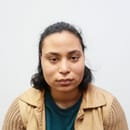This article contains spoilers for HBO’s House of the Dragon, Game of Thrones, and the Song of Ice and Fire book series as well as its companion novel, Fire and Blood.
“Lannister. Baratheon. Stark. Tyrell. They’re all just spokes on a wheel. This one’s on top, then that one’s on top and on and on it spins, crushing those on the ground. I’m not going to stop the wheel – I’m going to break the wheel.”
These words, spoken by one of Game of Thrones‘ central leads, Daenerys Targaryen (Emilia Clarke), can be read as Game of Thrones‘ central ethos. Note that when I say Game of Thrones, I am referring to the series in its entirety: so, all eight seasons of television and the A Song of Ice and Fire novels (including all the companion novels).
Now, to return to the ethos in question. In these lines of dialogue, Daenerys is explaining that in Westerosi politics, everything tends to be cyclical. That much is true, at least for Game of Thrones: throughout the television series, Westeros’ Iron Throne swaps hands many times. Each leader to “sit the Throne” is in some way ill-equipped for the job. From the unbothered King Robert Baratheon I, to petulant and cruel Joffery, and lastly, the tryannic Cersei Lannister. Daenerys herself burns the city before ascending to the Throne. The moral, here, would appear to be that absolute power corrupts absolutely.
But Game of Thrones has never been an especially moralistic tale. After all, it’s a brutal re-envisioning of conflicts of power and family, set in a fairly medieval landscape and with some fantasy elements to boot (hello dragons!).
What we’ve come to expect from the show is more along the lines of a layered, morally ambiguous conflict of warring desires and ambitions.
So – do the House of the Dragon’s first two episodes stack up to these expectations?
On balance, I’d say yes. Here are the biggest take-aways/set-ups in the show thus far (that is, from episodes 1 and 2):
Rhaenyra Targaryen v … Everyone?
House of the Dragon is set roughly 160 years before the events of Game of Thrones.
In it, House Targaryen (who have lost command of Westeros by the time of Game of Thrones) reigns over Westeros during a waning golden age. House Targaryen is arguably the most dangerous House on the continent, as overseen by King Viserys I.
At the end of House of the Dragon’s first episode, King Viserys spurns tradition (and spites his younger brother Daemon) by appointing his daughter, Princess Rhaenyra as his heir. Westeros’s noble houses generally follow the principle of male primogeniture, whereby the control of the state (or a house, in this case) always passes to the eldest male in a line (and thereafter the next eldest male). By appointing Rhaenyra, a woman, as the next in line, Viserys is obviously breaking with this tradition. He’s also setting the stage for greater conflict in future, because, no matter how strongly Viserys feels about his daughter becoming Queen in his stead, whether or not the rest of Westeros’ people and noble houses will accept her is a rather undecided matter. Viserys’ own brother, Daemon, fumes at having lost his position. No matter what unfolds over the House of the Dragon’s next eight episodes, Rhaenyra will be at the heart of the conflict – and have enemies around all corners.
For the sake of spoilers, I’ve not expanded too much on the forthcoming conflicts in House of the Dragon – but I’ll say this: keep your eyes not only on Rhaenyra, but on all the show’s central characters (King Viserys, Daemon, Alicent Hightower).
Where they go, the drama always follows and unfolds.


